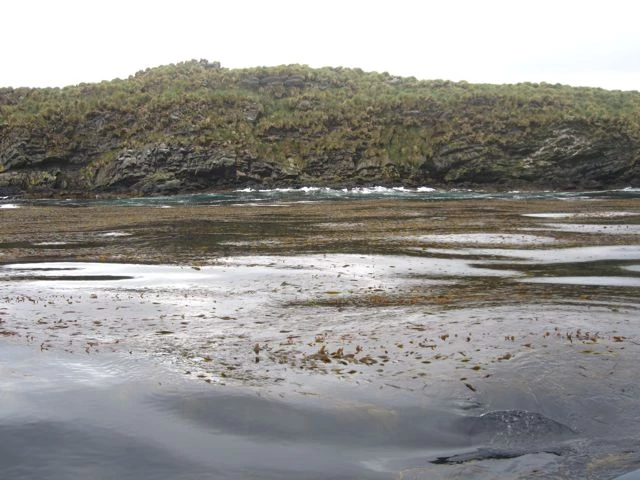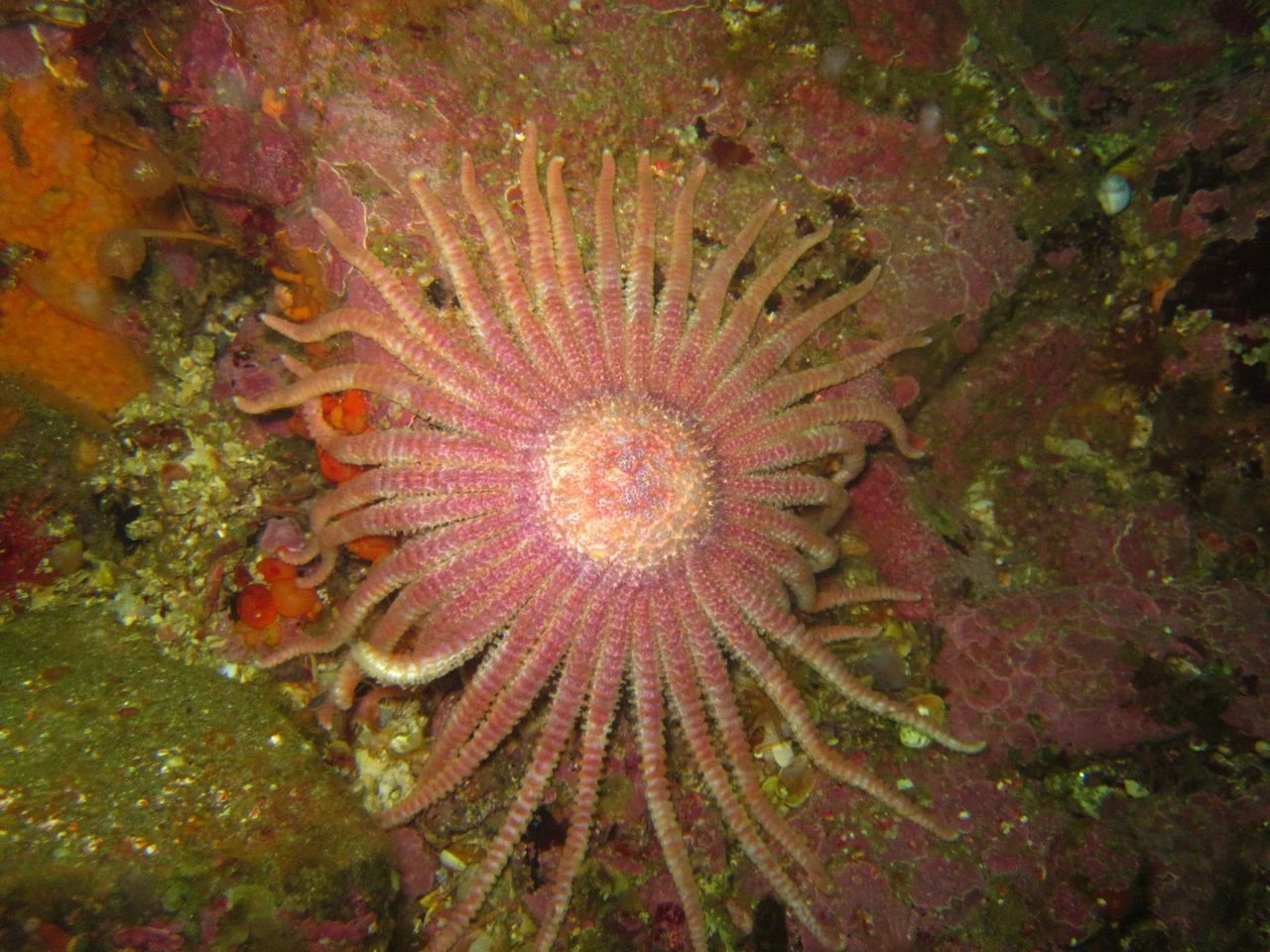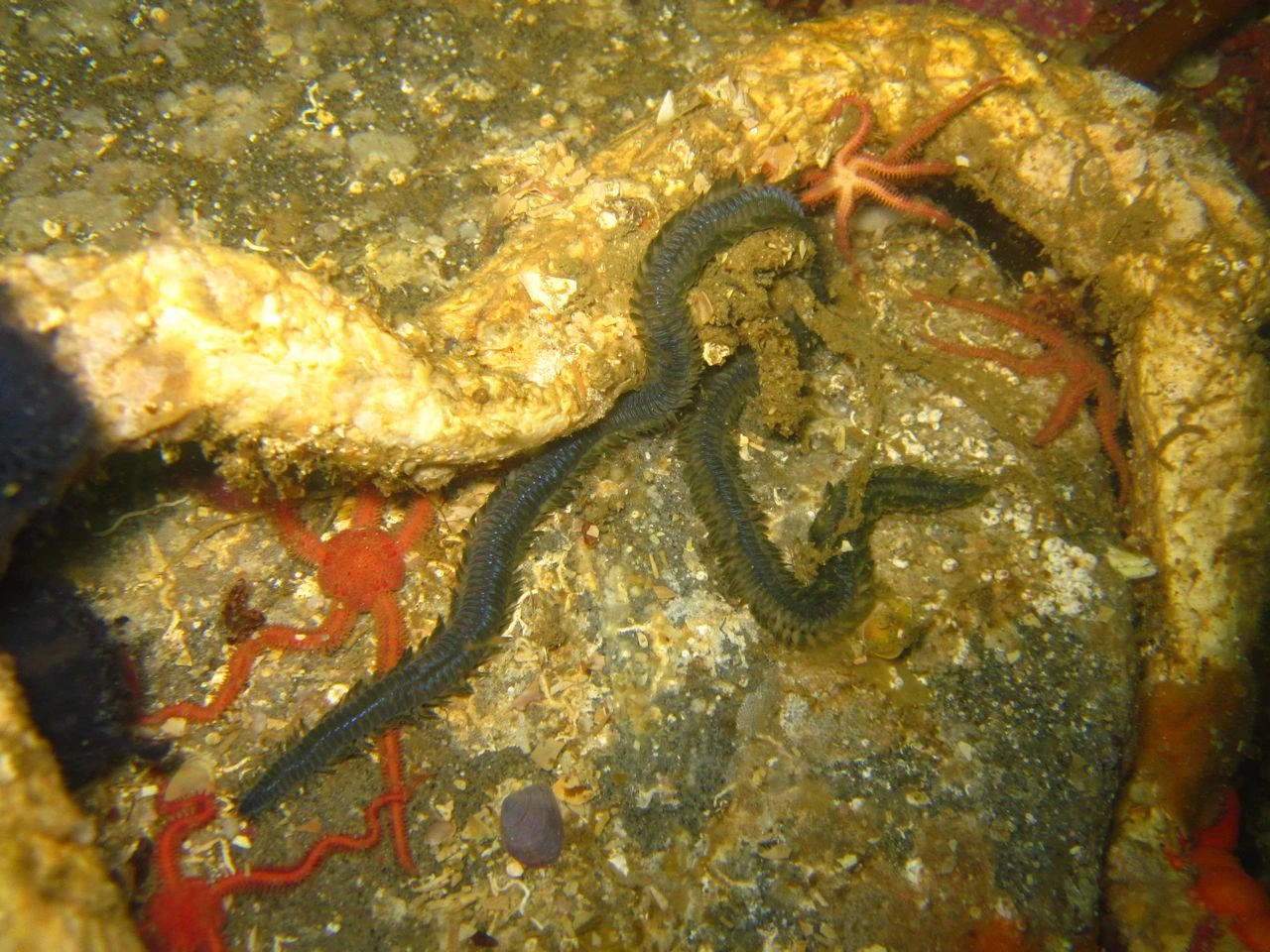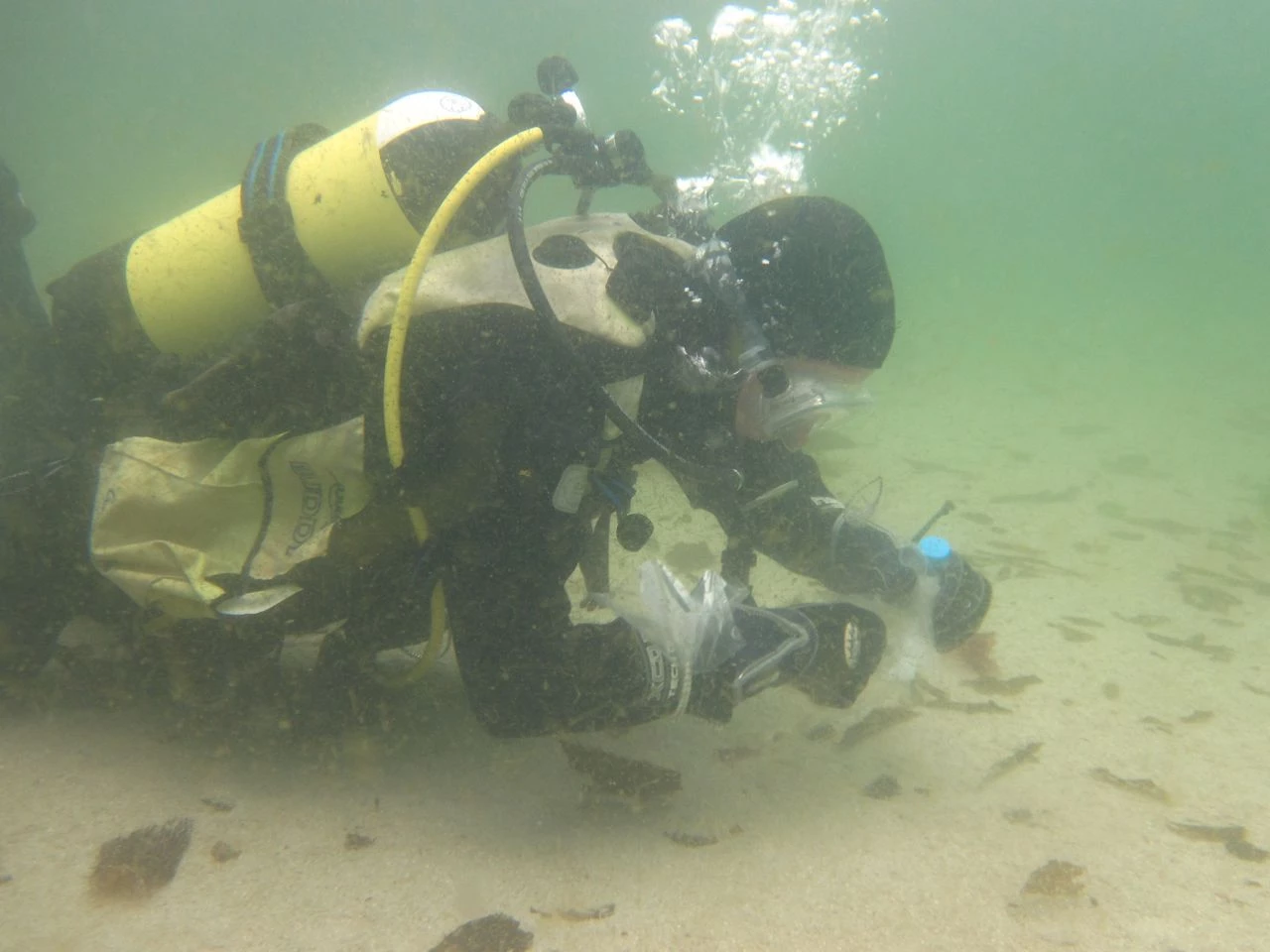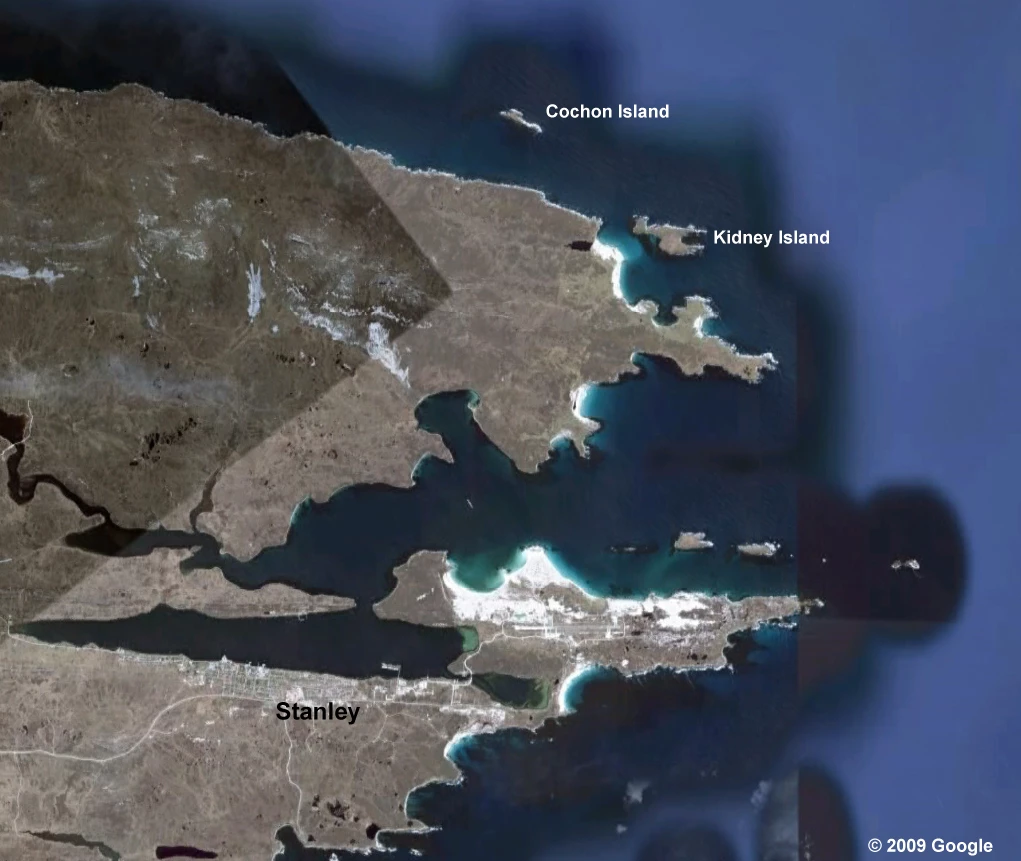Polychaete research in the Falklands by Teresa Darbyshire - The dive blog
, 28 November 2011
This was to be ‘liveaboard’ diving. We loaded all our kit on to the Hans Hansson, an ex-North Sea Scandinavian rescue vessel that has only been down in the Falklands for a few months in her new role as a tourist/research vessel. Setting off on Thursday morning we didn’t have very far to go but took it easy with a slow steam towards the north of Stanley. The slow roll eventually made my stomach wonder whether or not to stay friends with me but happily we managed to hold it together.
I had been concerned about just how cold the water was going to be with the suggestion that it would be around 5°C, which would have been painful. In general though, temperatures varied between 7 (cold, my hands hurt) and 9°C (chilly, some feeling remaining at end of dive). My new 7mm hood did its job to keep my head warm while the rest of me tended to get quite cold towards the end of each dive. Of course I was moving around very little and less than on a normal dive as I was mostly in one area collecting each time.
The seabed around Cochon Island was very rocky with steep walls and gullies in the shallower water (6-8m), large rocks and cobbles over coarse sand at around 10-15m and larger boulders/bedrock with bigger patches of open sand from around 15m and deeper. This also varied according to where we were around the island.
Diving through the giant kelp was an interesting experience. This kelp is nothing like anything you see in the UK. It grows up from its holdfast which attaches to the seabed at any depth down to 20m or so and then the fronds spread out on the surface for many more metres creating a thick mat of surface kelp (photo 1). This stuff is so tough that the RIB would actually anchor to it while the divers went in and then the divers themselves could use it as a shot line to the seabed and back again. When going in from the RIB it could be hard to get your feet under you through the fronds and then the general rule was sink straight down and don’t flounder! Otherwise it wraps itself round you and you end up dangling mid-water (probably upside down) hoping that your buddy might notice, take pity and cut you free.
Diving is done to very safe protocols here as the nearest recompression chamber is in Chile. Therefore, all dives are done shallower than 20m and there is no decompression diving, reducing the risk of nitrogen issues. The dive surveys are carried out by volunteers, who make up the Shallow Marine Surveys Group, just like the SeaSearch volunteers in the UK. These guys all give up their time willingly, often, as in this case, taking time off work to be involved or, where self-employed, giving up a day or two’s pay. It makes you feel very humble knowing that you are being paid to be there with them.
The marine life was colourful and diverse. Lots of different nudibranchs, starfish (photo 2), sea cucumbers, urchins, snails and crabs with many of the surfaces covered in a pink encrusting alga so thin in places that you could put a finger through it. Worms were not immediately evident unless you went looking for them. Turning over rocks was the simplest method and yielded many different species although some were particularly common. Those most often seen were large scaleworms (photo 3) more than 6cm in length, long paddleworms up to 20 cm long (photo 4) and on many surfaces were the long tubes of parchment worms (Chaetopterus sp.). Other methods of collecting involved scraping rock surfaces covered in a turf of hydroids and/or bryozoans, taking samples of the loose pink algal crusts and pieces of giant kelp holdfast. I say pieces because these holdfasts are enormous being nearly a metre wide and half as much high. I’d never be able to get one of those in a bucket!
I was also joined in my collecting by Christoph (photo 5), a German researcher just back from a cruise to South Georgia who was looking at crustacea, particularly isopods. Between us, life on the seabed was not safe.
The threatened weather didn’t materialise as forecast. The worst predicted day, Saturday, turned into the best with the least swell on the exposed side of the island leading to an amazingly still evening watching penguins and shearwaters return to the island for the night. This to the delight of the surveyors who managed to blitz the entire island with survey sites over the four days.
The visibility was the only disappointing point of the weekend. Again like the UK, a spring bloom is in progress here with plankton thick in the water. Visibility is still good in my eyes being a minimum of 6 m but knowing it can be crystal clear and at least 50 m is merely a tantalising thought. Macro shots are still possibly but wider shots of the scenery are impossible in the thick plankton, particularly as the kelp can increase the gloom at times.
The weather forecast for Saturday appeared with gusto on Sunday morning and although a first couple of pairs got in for a dive it was quickly decided to pack up and move slightly down the coast to Kidney Island where there was a chance of more shelter. This then ended our weekend with a shallow dive in a bay with the prospect of seeing sealions (photo 6). These did indeed come to play in the water and I quickly realised that the seals in the UK are little puppies compared to the full grown St Bernards I was seeing. Having 3 or 4 of these in your face under water having the occasional nibble at extremities gets a little nerve-wracking but still an unmissable experience. Also found a 'worm garden' with the worms poking upright out of their tubes in the sand into the surrounding water. Dug some of that up to bring back but I promise there was loads more left!
